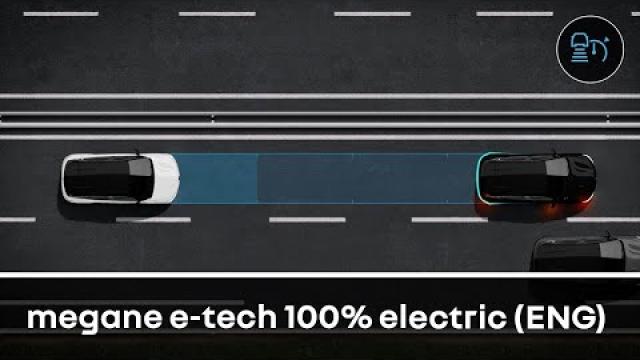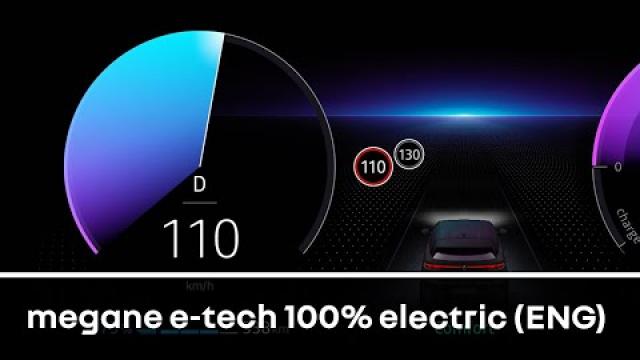Back to the list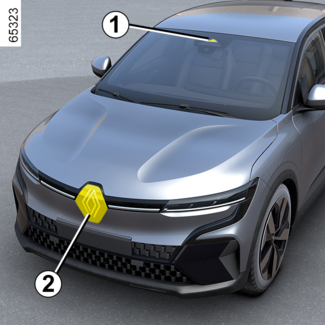
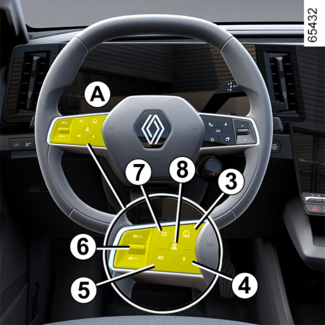
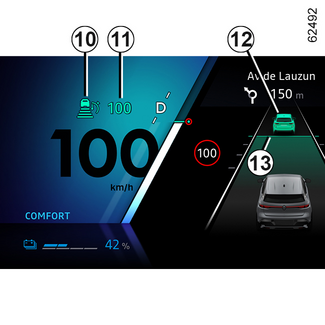
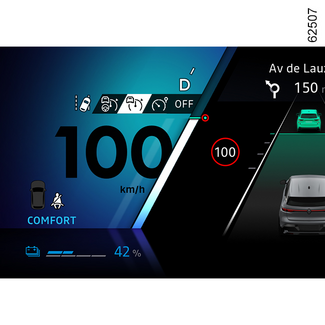
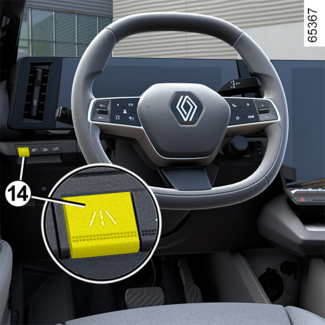
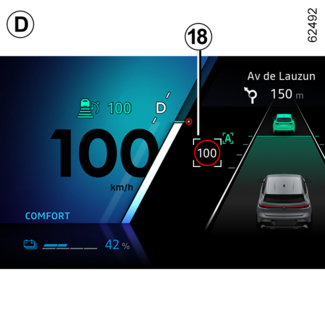
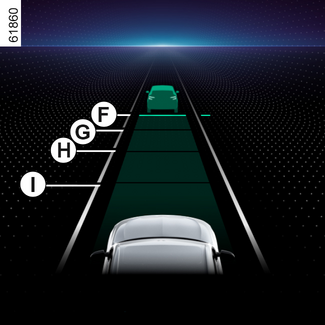

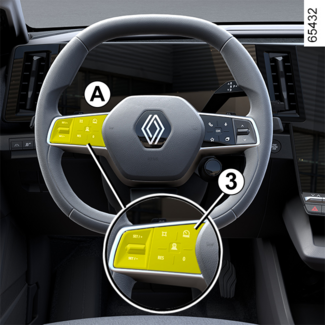
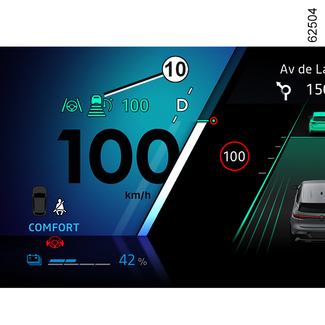
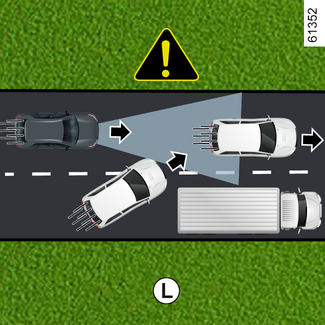
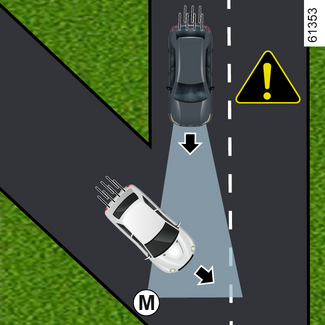
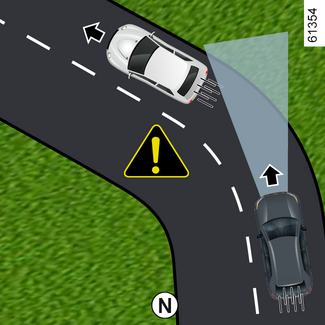

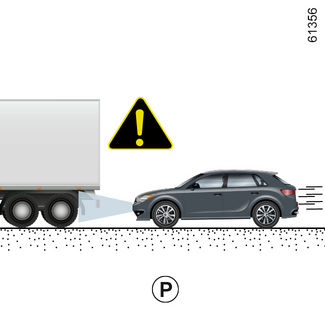
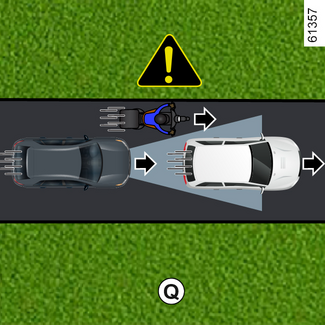
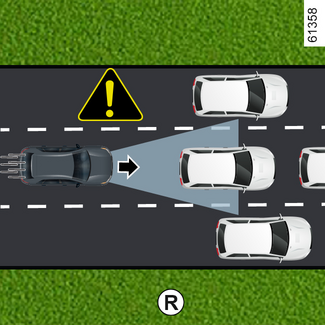
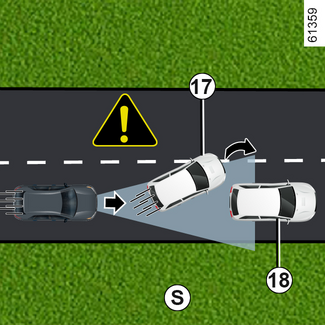
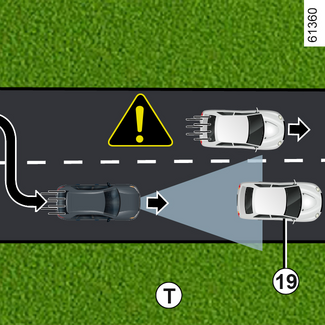


Stop and Go adaptive cruise control
Stop and Go adaptive cruise control
Based on information from a radar or camera, the Stop and Go adaptive cruise control function gives you the option of maintaining a selected speed,
known as the cruising speed, while keeping a safe distance from the vehicle in front
in the same lane.
Depending on the vehicle, when the "Road Sign Detection" function is activated DETECTION OF ROAD SIGNS, the system can adapt the speed of your vehicle according to the speed limit signs
recognized by the camera.
Depending on the country and subscription, the system will use the camera and the
map to adjust the vehicle speed in advance according to the context and road incidents
(roundabouts, bends, upcoming road signs or speed limit zones).
If the vehicle in front stops, the Stop and Go adaptive cruise control may brake your vehicle to a complete stop before setting
off again.
The system controls acceleration and deceleration of your vehicle using the engine
and braking system.
The system's maximum range is approximately 130 metres. This may vary according to
the road conditions (ground relief, weather conditions, etc.).
The adaptive cruise control function Stop and Go can be activated from 0 to 93 mph or 99 mph (0 to 150 km/h or 160 km/h) according
to road conditions (traffic, weather, etc.).
The function is represented by the  symbol or, depending on the vehicle, the
symbol or, depending on the vehicle, the  symbol.
symbol.
Note:
- the driver must observe the maximum speed limit and safe distances according to the legislation in the country where they are driving;
- the adaptive cruise control can brake the vehicle up to around a third of the braking capacity. Depending on the situation, the driver may need to brake harder.
Tip
While ECO mode is activated, the cruising speed cannot exceed the maximum speed for ECO mode
DRIVING ADVICE, ECO-DRIVING.
Tip
The regenerative braking system and the paddles are not available when the cruise
control or the adaptive cruise control function is activated.
Tip
The Stop and Go adaptive cruise control does not trigger an emergency stop and its braking capability
is limited.
WARNING
This function is an additional driving aid.
It can under no circumstances replace the driver's responsibility to respect speed
limits and safe distances or to be vigilant.
The driver must always be in control of the vehicle.
The driver must always adapt their speed according to the surroundings and traffic
conditions.
Use the Stop and Go adaptive cruise control function outside built-up areas, on wide roads with visible
lines.
The cruise control may have limited operation on very winding or slippery roads (black
ice, aquaplaning, gravel) or during bad weather (fog, rain, side winds, etc.)
There is a risk of accidents.
Location of the camera 1

Make sure the windscreen is not obscured (by dirt, mud, snow, etc.).
Location of the radar 2
Ensure that the radar protection plate is not obstructed (dirt, mud, snow, a badly
fitted number plate), impacted, modified (including painting) or hidden by any accessory
fitted on the front of the vehicle (on the grille or logo, etc.).
Controls

- 3.
- Switch for selecting/deselecting the driving aids, depending on the vehicle:
- Active Driver Assist;
- Adaptive Cruise Control;
- cruise control;
- speed limiter;
- Off.
- 4.
- Put the function on standby (with cruising speed stored) (0).
- 5
- Recall the stored cruising speed (RES).
- 6
- Upwards: activates, increases cruising speed or stores the current speed (SET/+).
- Downwards: activates, decreases cruising speed or stores the current speed (SET/-).
- 7
- Pop-up button (depending on the vehicle): adapts the speed setpoint to detected speed limits
DETECTION OF ROAD SIGNS
- 8
- Adjusting the following distance.
Tip
Depending on the vehicle, you can link the cruise control function to the "Road sign
detection" function DETECTION OF ROAD SIGNS by pressing the switch 7.
WARNING
The radar and camera zones must be kept clean and free of any tampering in order to
ensure the proper operation of the system.
Displays

- 10.
- Stop and Go adaptive cruise control warning light.
- 11.
- Stored cruising speed.
- 12.
- Vehicle in front.
- 13.
- Stored safe distance
WARNING
Important: you should keep your feet near the pedals at all times to prepare for any
event.
Switching on
Control A

Press switch 3 as many times as necessary to select adaptive cruise control. The 10 warning light appears in grey. The "Adaptive Cruise Control ready: SET to activate" message appears on the instrument panel accompanied by dashes to indicate that the
cruise control function is in operation and waiting to store a cruising speed.
Control B
Press the switch 9.
Warning light 10 appears in grey, and the message "Adaptive cruise control ON" appears on the instrument
panel, accompanied by dashes to indicate that the cruise control function is activated
and waiting to store a cruising speed.

Note: for vehicles fitted with the system "Active driver
assist" ACTIVE DRIVER ASSIST, when the "Lane centering assist." function, previously selected in the multimedia system or depending on the vehicle,
by pressing the switch 14 (switch warning light 14 on), adaptive cruise control is activated automatically when the "Lane centering assist." function is activatedACTIVE DRIVER ASSIST.
This function cannot be activated when:
- the parking brake is applied;
- the driver's seat belt is not fastened;
- one or more doors are incorrectly closed;
- the "Hands-free parking" function is already activated.
The "Adaptive Cruise Ctl unavailable" message is displayed on the instrument panel.
Activating cruise control
While the vehicle is stationary or moving at a steady speed, push the control 6 upwards (SET/+) or downwards (SET/-): the function is activated and the current speed is stored.
The minimum cruising speed is 19 mph (30 km/h).
The cruising speed 11 replaces the dashes and cruise control is confirmed by the appearance of the cruising
speed in green and warning light 10.
If you try to activate the function above 93 mph (150 km/h) or, depending on the vehicle,
99 mph (160 km/h), the "Invalid Speed" message is displayed and the function will remain inactive.
Once a cruising speed is memorised and the cruise control function is active, you
may lift your foot off the accelerator pedal.
Note: if your vehicle speed is lower than about 19 mph (30 km/h), the function uses a default
cruising speed of 19 mph (30 km/h). The vehicle will accelerate until it reaches the
stored cruising speed.
Activating cruise control with speed limit sign recognition (display C)
(depending on the vehicle)
If the vehicle is equipped with the "Road Sign Detection" DETECTION OF ROAD SIGNSfunction, press the contextual button 7 to adapt the vehicle's speed to the 15 speed limits detected by the camera.
When passing the sign, the cruising speed 11 adopts the value of the detected speed 15.
Activating cruise control with advance speed limit sign recognition (display D)
(depending on subscription)
Using the camera, the "Road sign detection" function DETECTION OF ROAD SIGNS and the map associated with the subscription, the system anticipates the automatic
adjustment of the vehicle speed until the next sign is identified 16.
Activation/deactivation
From the multimedia screen, in the "Vehicle" World, select "Driving assistance". Then, from the "Comfort" menu, select "Speed limit adaptive cruise control".
The letter "A" 17 is displayed on the instrument panel to confirm the activation of the cruise control
with advance speed limit sign recognition.

Note:
- you can also activate/deactivate the function by pressing and holding the pop-up button 7;
- in some cases (if there is a significant difference between the vehicle speed and limited speed), the system may request that you validate the speed manually be pressing the pop-up button 7: the white square 18 is displayed around the indicated speed to inform you.
Tip
Cruise control with advance speed limit sign recognition is associated with a subscription.
If there is no subscription, this function cannot be activated.
To manage the subscription, please refer to the multimedia instructions.
Operation
With the function activated, the following speeds are displayed on the instrument
panel:
- cruising speed 11;
- the current speed limit detected by the system on the section of road on which the vehicle is travelling 15;
- the speed detected by the system on the next road section or speed limit zone 16.
The detected speed 16 is taken into account by the system. The vehicle speed adjusts gradually, until it
becomes the cruising speed 11, without any action from the driver. The speed indicated on 16 is displayed on 15 when passing the sign or zone identified.
The driver must always stay vigilant regarding the speed applied by the system and
remains responsible for the vehicle speed.
When the function is not activated or the subscription is no longer active, the operation
is identical to setting the cruising speed with speed limit sign recognition (display
C).
Activating cruise control with advance recognition of the road layout (display E))
(depending on subscription)
Using the camera, the "Road sign detection" DETECTION OF ROAD SIGNSfunction, and the mapping purchased with the subscription, the system can anticipate
and manage the automatic adaptation of the cruising speed 10, when the vehicle approaches a roundabout or a bend.
If the vehicle is approaching a bend or roundabout, a 19 warning light appears on the instrument panel. The vehicle adjusts its speed to a
speed appropriate to the feature detected.
The driver must always stay vigilant regarding the speed applied by the system and
remains responsible for the vehicle speed.
Activation/deactivation
From the multimedia screen, in the "Vehicle" World, select "Driving assistance". Then, from the "Comfort" menu, select "Road layout adaptive cruise control".
In the “Adaptive regulation” menu, select “To road context”.
(When the function is not activated or the subscription is no longer active, operation
is the same as setting the cruising speed with speed limit sign recognition (display
A or, depending on the subscription, setting the cruising speed with speed limit sign
recognition (display D).
The following symbols show the features taken into account by the system:
roundabout;
bend.
Tip
Cruise control with advance recognition of the road layout is associated with a subscription.
If there is no subscription, this function cannot be activated.
To manage the subscription, please refer to the multimedia instructions.
Controlling cruising speed
You can resume control of the vehicle speed at any time by:
- putting the function on standby:
- by pressing the brake pedal;
- or by pressing the switch 4 (0);
- or, depending on the vehicle, deactivation of the function by pressing the general Start/Stop switch 9;
- by pressing the driving aids selection/deselection switch 3.
When automatically adapting the speed to the signs and/or road layout, it is possible
to ignore these events. Press the control 5 upwards (RES/+) to recall the stored cruising speed.
Safe distance control activation
As soon as cruise control is activated, the default safe distance 13 is displayed in green on the instrument panel.
If the system detects a vehicle in your lane, an outline of a vehicle 12 appears above the distance gauge 13 on the instrument panel.
Your vehicle adapts its speed to that of the vehicle in front and applies the brakes
if necessary (the brake lights come on) in order to maintain the distance displayed
on the instrument panel.
Note: the size of the 12 outline varies according to the distance separating you from the vehicle in front.
The larger the outline, the closer the vehicle in front.
Setting the cruising speed
Control A
You can vary the speed by pressing repeatedly (for low variation) or pressing and
holding (for high variation) the control 6:
- downwards: (SET/-) to reduce the speed:
- upwards (SET/+) to increase the speed.
Control B
You can vary the speed by pressing repeatedly (for low variation) or pressing and
holding (for high variation) the control 6:
- downwards: (SET/-) to reduce the speed:
- upwards (RES/+) to increase the speed.
Adjusting the following distance
You can vary the safe distance from the vehicle in front at any time by pressing switch
8 repeatedly.

The horizontal distance gauge on the instrument panel indicates the various available
safe distances:
- distance gauge F: long distance (corresponding to approximately 2.4 seconds);
- distance gauge G: intermediate distance 2 (corresponding to approximately 2 seconds);
- distance gauge H: intermediate distance 1 (corresponding to approximately 1.6 seconds);
- distance gauge I: short distance (corresponding to approximately 1.2 seconds).
The selected distance gauge appears in green on the instrument panel. The other gauges
remain in grey.
Note: the distance must be set according to the traffic level, local regulation and weather
conditions.
Tip
The safe distance is adjusted by default on the distance gauge G.
Exceeding the cruising speed
The cruising speed may be exceeded at any time by applying the accelerator pedal.
If it is exceeded, the cruising speed 11 appears in yellow.
If the driver presses the accelerator pedal, the "Distance Control" function will
no longer operate.
Then, release the accelerator pedal: the cruise control and safe distance control
will automatically resume the speed and distance instructions that you had previously
selected.
Overtaking manoeuvre
If you want to overtake the vehicle in front and your speed is over 43 mph (70 km/h)
only, activating the direction indicators temporarily reduces the following distance
and triggers acceleration to facilitate overtaking.
Stopping the vehicle and setting off
If the vehicle in front slows down, the system adapts its speed to bring the vehicle
to a complete stop if necessary (e.g. in heavy traffic). The vehicle stops a few metres
from the vehicle in front.
When the vehicle in front sets off again:
- if the stop lasts for less than thirty seconds, the vehicle will start again without any action required from the driver.
Note: the driver should always be ready for sudden incidents while driving and remains
responsible for controlling the vehicle: if the system detects a pedestrian in the
area around the vehicle, the automatic restart will be inhibited until the next stop;
- if the stopping time exceeds approximately thirty seconds, for the vehicle to set off again it is necessary to either:
- by pressing the accelerator pedal;
- by pressing once on the button 5 (RES) on control A.
- by pressing the button 5 upwards (RES/+) on the control B.
The message "Press RES or accelerate to restart Cruise Control" appears on the instrument panel to confirm.
If the stop exceeds around three minutes, the electronic parking brake is automatically
applied and the Stop and Go adaptive cruise control is deactivated.
The indicator light 10 goes out to confirm that the function is deactivated.
Putting the function on standby
You can set the function to standby when:
- you press switch 4 (0) ;
- you apply the brake pedal while the vehicle is moving.
The function is deactivated by the system if:
- you put the gear control in position P, R or N ;
- you unbuckle the driver's seat belt;
- you open one of the opening elements;
- you press the engine start/stop button;
- the slope is too steep;
- certain driving aids and correction devices are triggered (active emergency braking,ABS, ESC, etc.)
Note: Depending on the vehicle, if the reception of the connected data is not optimal,
the system automatically switches on standby the advance speed limit sign recognition
and/or advance recognition of the road layout functions.
The two functions are automatically reactivated as soon as reception of the connected
data becomes optimal again.
In all circumstances, the standby is confirmed when the warning lights appear in grey
and the message "Adaptive Cruise Control disconnected" appears on the instrument panel.
WARNING
Putting the Stop and Go adaptive cruise control in standby or switching it off does not cause a rapid reduction
in speed: you must brake by applying the brake pedal if necessary.
Exit from standby
Based on the stored cruising speed
If a speed is stored, it can be recalled, once you are sure that the road conditions
are suitable (traffic, road surface, weather conditions, etc.). Press the 6, switch upwards in the range of valid speeds.
When the stored speed is recalled, activation of the cruise control is confirmed by
the illumination of the cruising speed in green.
Note: if the stored speed is higher than the current speed, the vehicle will accelerate
to reach that speed.
Based on the current speed
When the cruise control is set to standby, pressing switch 6, downwards reactivates the cruise control function without taking into account the
stored speed: it is the speed at which the vehicle is moving that is taken into account.
"Take control of the vehicle" warnings

In some situations (e.g. coming upon a much slower vehicle, vehicle in front changing
lanes quickly, etc.) the system may not have time to react.
Depending on the situation, the system sounds a beep associated with:
- the orange alert J if the situation requires the driver's attention;
or
- the red alert K accompanied by the message "Brake" if the situation requires the driver's immediate attention.
In all situations, react accordingly and perform the appropriate manoeuvres.
Switching off the function

The adaptive cruise control Stop and Go function is interrupted:
- when you press the A control switch 3
- when you press the B control switch 9
- when you press the B control switch 19
The 10 warning light disappears from the instrument panel to confirm that the function has
stopped.
Temporary unavailability (radar)

The radar is able to detect vehicles in front of your vehicle. The system cannot operate
correctly if the radar detection area is obscured or if its signal is disrupted.
If the radar detection area is obstructed or the radar signal is disrupted, the message
"Front radar no visibility" is displayed on the instrument panel and the adaptive cruise control Stop and Go is interrupted.
The green warning light 10 disappears to confirm that the function has been automatically deactivated.
Ensure that the radar area remains clean and is not obstructed by snow, mud, a badly
fitted number plate or by any accessory fitted on the front of the vehicle (on the
grille), or hidden by any accessory fitted on the front of the vehicle (on the grille
or logo, etc.).
Conditions in certain geographical areas may hinder the function, for example:
- arid zones, tunnels, long bridges or lightly used roads without road lines, without signs or trees nearby;
- a military or airport zone.
You must leave such areas in order for the function to work.
In all cases, if the message is not erased after the engine is restarted, please contact
an authorised dealer.
Temporary unavailability (camera)
The system cannot operate if the camera is obscured (by dirt, mud, snow, condensation,
etc.).
In the event of decreased visibility of the camera, the performance of the adaptive
cruise control Stop and Go will be reduced. Remain vigilant.
Operating faults
If an adaptive cruise control function Stop and Go operating fault is detected, the "Check adaptive cruise control" message appears
on the instrument panel and the adaptive cruise control Stop and Go function is suspended.
If an operating fault is detected on one or more components of the system, the Stop and Go adaptive cruise control function is deactivated.
Depending on the type of malfunction, the message is displayed on the instrument panel:
- "Check Front camera", accompanied, depending on the vehicle, by the warning light
;
- "Front radar to check", accompanied, depending on the vehicle, by the warning light
;
- "Check Camera/Radar", accompanied, depending on the vehicle, by the warning light
;
- "Check vehicle" accompanied by the warning light
.
Consult an approved dealer.
Limitations of system operation
Vehicle detection

The system detects only vehicles (cars, trucks, motorbikes) that are moving in the
same direction as your vehicle.
A vehicle turning into the same lane (e.g. L) will be taken into account by the system only once it enters the camera and radar
detection areas.
The system may trigger inappropriate or delayed braking.

The system cannot detect:
- vehicles arriving at intersections: slip road (e.g. M), etc.;
- vehicles driving on the wrong side of the road or reversing towards you.
Tip
The Stop and Go adaptive cruise control must be used outside built-up areas, on wide roads with visible
lines.
Detection during cornering

When entering a corner or bend, the radar and/or camera may be temporarily unable
to detect the vehicle in front (e.g. N).
The system may trigger an acceleration.
When exiting a bend, the system's detection of the vehicle in front may be disrupted
or delayed.
The system may trigger inappropriate or delayed braking.
Detection of vehicles in adjacent lanes

The system may detect vehicles driving on an adjacent lane when:
- you drive into a bend (e.g. O);
- you are driving on a road with narrow lanes;
- the speed of the vehicle on the adjacent lane is slower and if one of these vehicles is located too close to the lane of the other.
The system may incorrectly trigger vehicle slowing or braking.


Vehicles hidden due to variations in ground relief
The system will not detect vehicles hidden due to variations in ground relief or those
located outside of the camera and radar detection areas when driving uphill or downhill.
Vehicles outside the camera and radar detection areas.
The system will react late or not at all if the detected vehicles are outside the camera and radar detection areas, particularly
in the following cases:
- vehicles transporting long objects which exceed the line;
- the actual length of tall vehicles (e.g. P) is outside the radar detection area (construction machine, agricultural equipment towing vehicle, etc.);
- vehicles insufficiently centred in the lane;
- narrow vehicles which are very close (e.g. Q).

Stationary and slow moving vehicles
When your speed is over approximately 31 mph (50 km/h), the system does not detect:
- stationary vehicles (e.g. R);
- very slow moving vehicles.
When your speed is less than approximately 31 mph (50 km/h), the system may not react or may react very late to:
- stationary vehicles (e.g. R);
- very slow moving vehicles;

- vehicles in front 17 that change lane, discovering a stationary vehicle 18 (e.g. S);
- stationary vehicles 19, when you change lane (e.g. T).

Tip
Always be ready to respond in all circumstances.
The driver must always be in control of the vehicle.
The Stop and Go adaptive cruise control does not trigger an emergency stop and its braking capability
is limited.

Non-detection of fixed obstacles and objects of a small size
The system cannot detect:
- pedestrians, bikes, scooters, etc.;
- animals;
- fixed obstacles (toll barriers, walls, etc.) (e.g. U).
These are not taken into account by the system. They do not trigger any alert or reaction
by the system.
Detection of vehicles moving into lane at high speed

If your vehicle is overtaken by another vehicle driving at high speed 20 (motorcycle, car, etc.) and the vehicle is temporarily between you and the vehicle
in front 21, the system may trigger undue acceleration, slowing or braking.
Warnings
WARNING
This function is an additional driving aid. It can under no circumstances replace
the driver's responsibility to respect speed limits and safe distances or to be vigilant.
The driver must always be in control of the vehicle.
Apart from the speed limit signs and road map information from the mapping (vehicles
fitted with the "Road sign detection" function and a subscription), other traffic
information (traffic lights, pedestrian crossings, etc.) is not taken into account
by the system. The driver must always adapt their speed to the surroundings and driving
conditions, regardless of system indications.
The system should under no circumstances be taken to be an obstacle detector or an
anti-collision system.
Use the adaptive cruise controlStop and Gooutside built-up areas, on wide roads with visible lines.
System servicing/repairs
- In the event of an impact, the radar and/or camera alignment may be changed and its operation may consequently be affected. Deactivate the system and consult an authorised dealer.
- Any work in the proximity of the radar and/or camera (replacements, repairs, windscreen modifications, paintwork etc.) must be carried out by a qualified professional.
Only an authorised dealer is qualified to service the system.
WARNING
Deactivating the function
You must deactivate the function if:
- the vehicle is being towed (breakdown recovery);
- the vehicle is towing a trailer or a caravan;
- the vehicle is being driven in a tunnel or close to a metallic structure;
- the vehicle arrives at a toll point, a roadwork area or on a narrow lane;
- the vehicle is driven on a very winding road (mountain road, etc.);
- the vehicle is being driven up or down a very steep slope;
- the visibility is poor (glaring sun, fog, etc.);
- the vehicle is being driven on a slippery road surface (rain, snow, gravel, etc.);
- the weather conditions are poor (rain, snow, side winds, etc.);
- the radar area has been damaged (impacts, etc.);
- the camera area has been damaged (e.g. on the inside or outside of the windscreen);
- the windscreen is cracked or distorted.
In the event of the system behaving abnormally, deactivate it and consult an authorised
dealer.
WARNING
In the event of system disturbance
Some conditions can disturb or damage the system's operation, such as:
- the windscreen or bumper is obscured in the radar area (by dirt, ice, snow, condensation, number plate, etc.);
- a complex environment (tunnel, etc.);
- poor weather conditions (snow, heavy rain, hail, black ice, etc.);
- poor visibility (night, fog, etc.);
- being dazzled (glaring sun, lights of vehicles travelling in the opposite direction; etc.);
- narrow, winding or undulating road (tight bends, etc.);
- a vehicle with a significant difference in speed;
- use of mats not adapted to the vehicle. On the driver's side, only use mats suitable for the vehicle, attached with the pre-fitted components, and check the fitting regularly. Do not lay one mat on top of another. There is a risk of wedging the pedals.
In this case, the system may brake or accelerate unintentionally.
Many unforeseen situations may affect the system operation. Certain objects or vehicles
that can appear in the camera or radar detection zone may be interpreted by the system
incorrectly, possibly leading to inappropriate acceleration or braking.
You should always be attentive to sudden events that might occur while you are driving.
Always keep your vehicle under control by keeping your feet near the pedals, so that
you are ready to act in any event.
